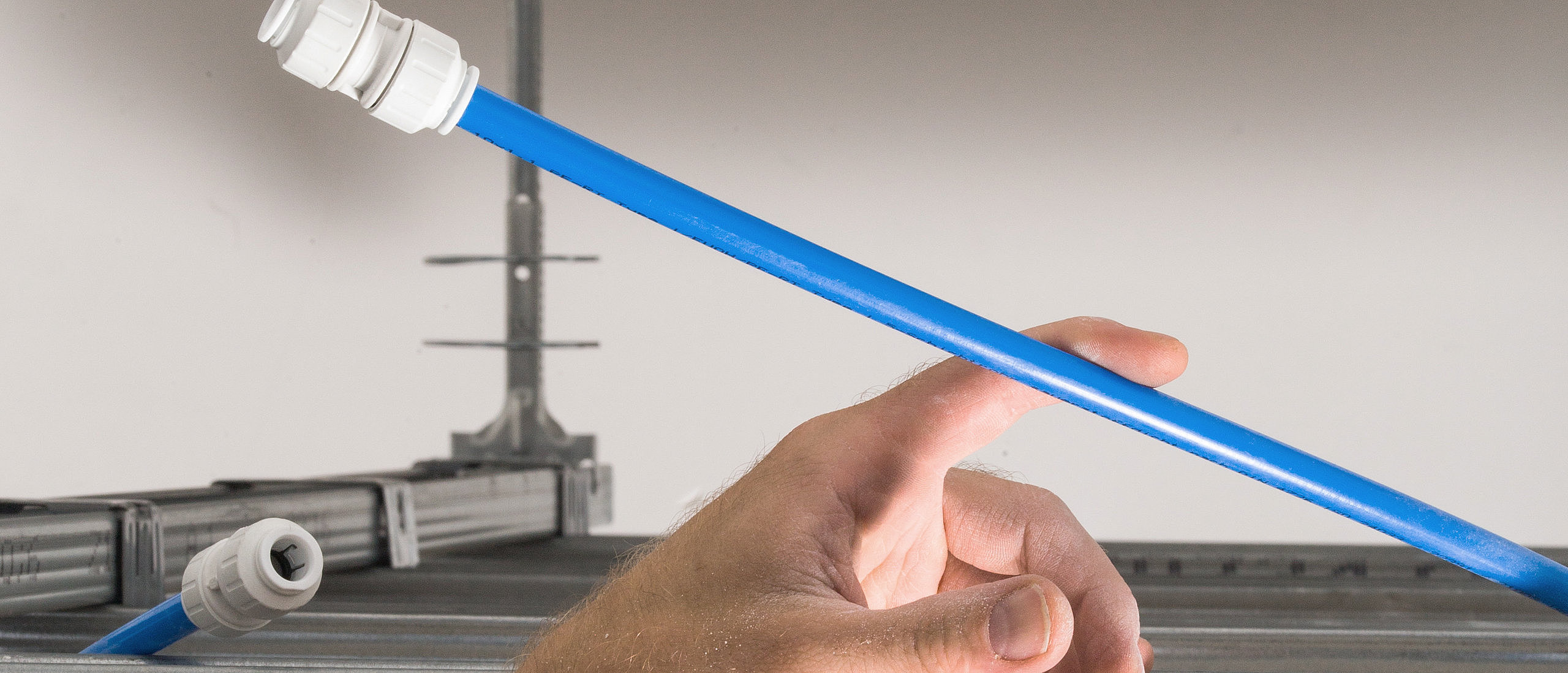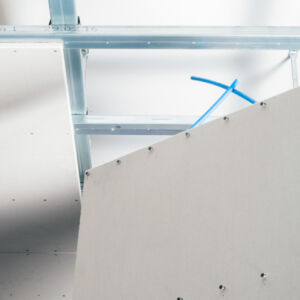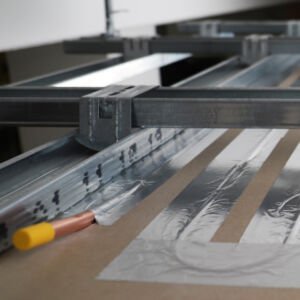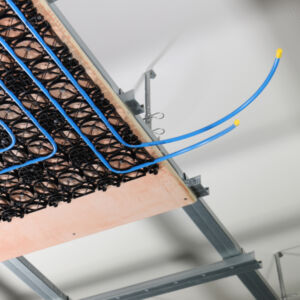Retrofitting the Comfort of Ceiling Heating in an Old Building, Room by Room
Taking advantage of radiant heat retrospectively
FLEXIRO ceiling heating makes it possible to use radiant heat in old buildings. Radiant heat prevents air and dust turbulence, improves the indoor climate and promotes general well-being. It is no coincidence that more and more hospitals and other medical facilities are choosing to retrofit ceiling heating.
The thermodynamic law "warm air rises - cold air falls" plays a minor role in ceiling heating. 90% of the heat transfer to the room is by radiant heat. The proportion of radiant heat is therefore much higher in the case of ceiling heating than in the case of wall or underfloor heating.
Even heating of all parts of a room, energy efficiency and the possibility of using it as a cooling ceiling make ceiling heating the all-rounder among panel heating systems. The FLEXIRO kit makes it possible to take advantage of these benefits in old buildings.
Benefit Thermal comfort
The FLEXIRO ceiling heating system is an almost perfect realisation of the principle of panel heating. The heat is evenly distributed over a large area of the ceiling through the narrow loops of the flexible 10 mm plastic pipe and can radiate into the room without being obstructed by objects. As a result, FLEXIRO ceiling heating provides amazing thermal comfort even in old buildings with low flow temperatures. Due to the high proportion of radiant heat, which also radiates from the walls and floor, the human body feels as comfortable at a room temperature of 20°C as it does at 22°C generated by conventional radiators.
The following illustration shows the temperature curves of different types of heating compared to the climate zones of the human body. Ceiling heating comes closest to the ideal of room heating. The result is an even temperature pattern that provides comfortable warmth for the whole body.
The figure also shows that the floor temperature with ceiling heating is slightly higher than the room temperature, as the floor is also heated by absorption and reflection.
Heat distribution of ceiling heating compared to other types of heating

Benefit Healthiness
The comparatively low surface temperatures and even temperature distribution in the room minimise air turbulence. This means that fewer allergens circulate in the air. House dust allergy sufferers in particular appreciate this benefit of ceiling heating. As with underfloor heating, mould growth is actively prevented because the even heating of the large ceiling surfaces prevents cold bridges at corners or window soffits and temperature differences in the room. FLEXIRO ceiling heating also creates a comfortable, homogeneous and healthy indoor climate in old buildings.
Benefit Design freedom
Another advantage of water-supported ceiling heating is its invisibility. There are no unsightly radiators to interfere with the design and layout of the room. In addition, the ceiling is mostly uncovered and freely accessible. Ceiling heating systems control the room temperature unobtrusively by radiating heat evenly to the floor and walls, 'heating' them as well. The result is even radiant heat all around the body. This opens up all sorts of design possibilities.
Benefit Energy efficiency
With ceiling heating you can reduce your heating costs in old buildings. Lower flow temperatures ensure energy and cost savings. Laying the heating pipes close to the surface of the ceiling promotes responsive heating behaviour. In addition, the radiant ceiling allows the use of all energy sources and is an ideal match for the use of renewable energies such as solar or geothermal energy.
Benefit Cooling ceiling
The FLEXIRO system can be used for cooling in summer without any modifications. A heating-cooling ceiling ensures comfortable temperatures even in rooms with large window areas or under the roof during the warm season.
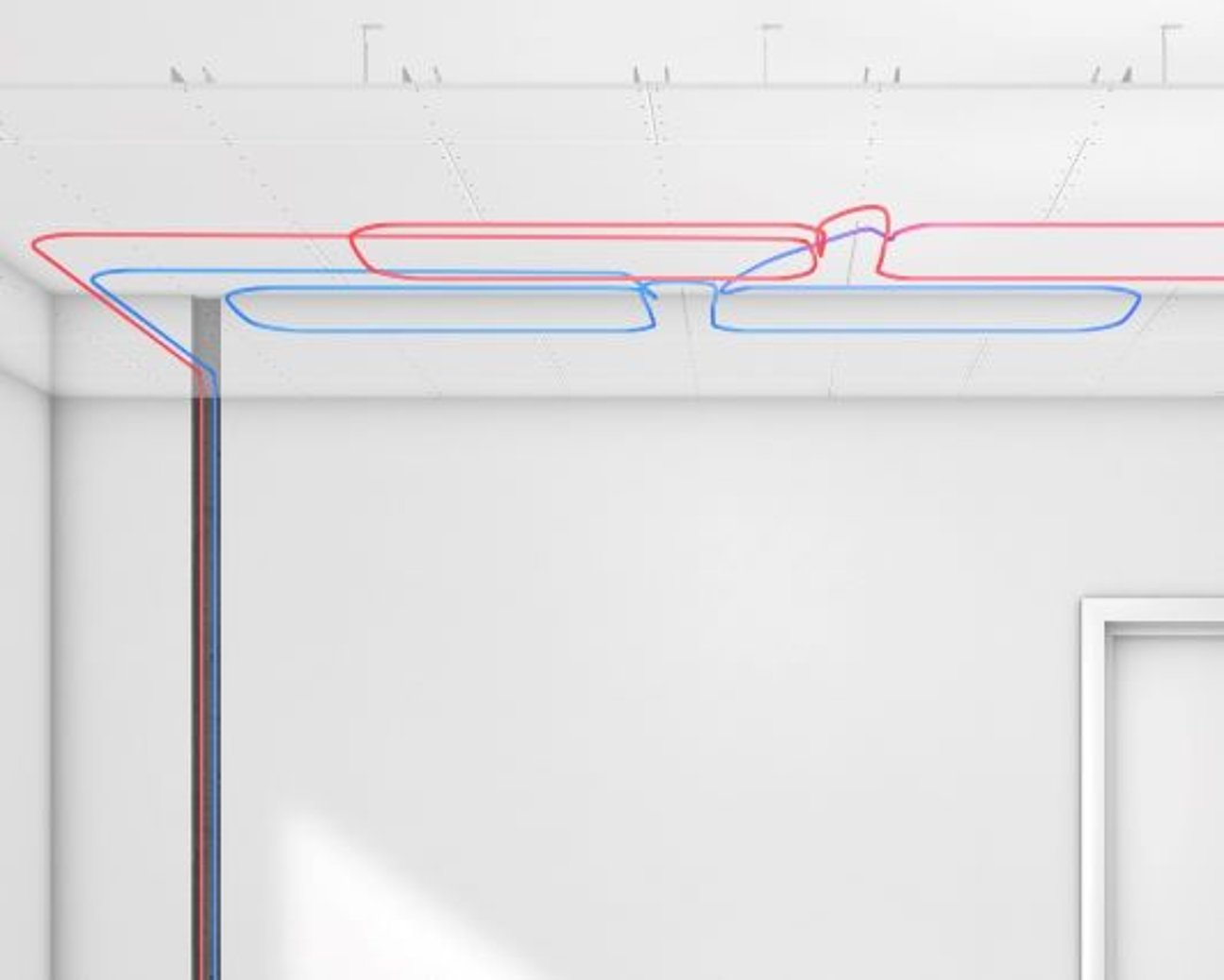
How to turn a FLEXIRO ceiling heating system into a cooling ceiling in the summer trending_flat 4 Possible solutions
- What water cooling options can be considered?
- What cooling capacity can be expected?
- How can the chilled ceiling be controlled?
We provide answers to the most important questions when retrofitting a cooling ceiling.
